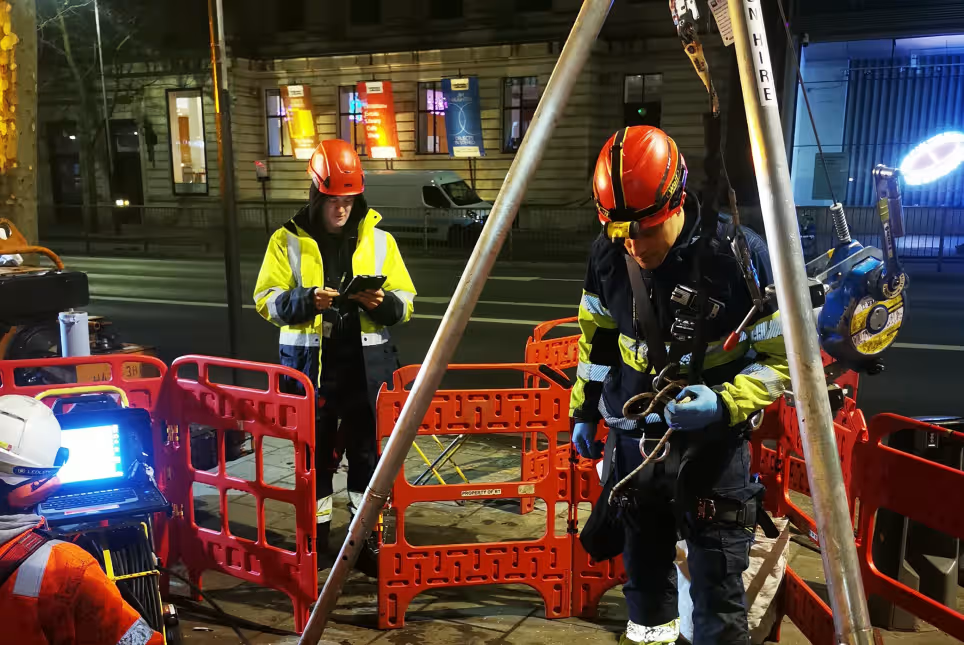- Professional Development
- Medicine & Nursing
- Arts & Crafts
- Health & Wellbeing
- Personal Development
392 Compliance courses in Northfleet
CCNSG Safety Passport National
By Vp ESS Training
The aim of the CCNSG Safety Passport is to ensure a basic knowledge of health and safety for all site personnel to enable them, after appropriate site induction, to work on site more safely with lower risk to themselves and others. Book via our website @ ESS | Training Courses | Vp ESS (vp-ess.com) or via email at: esstrainingsales@vpplc.com or phone on: 0800 000 346 or via email at: esstrainingsales@vpplc.com or phone on: 0800 000 346

City & Guilds Level 3 Award in Direct Emergency Rescue and Recovery of Casualties from Confined Spaces - 6160-07
By Vp ESS Training
City & Guilds Level 3 Award in Direct Emergency Rescue and Recovery of Casualties from Confined Spaces - 6160-07 - This course is designed to introduce delegates to the basics of rescue and recovery of casualties from confined spaces. Understanding emergency arrangements as set by legislation and employers, some of the equipment required to rescue a casualty and safety of the rescue team. Note: A pre-requisite qualification is required to complete this course. Delegates must hold a valid 6160-08 qualification. Book via our website @ https://www.vp-ess.com/training/confined-spaces/6160-07-level-3-award-in-direct-emergency-rescue-and-recovery-of-casualties-from-cs/ or via email at: esstrainingsales@vpplc.com or phone on: 0800 000 346

City & Guilds Level 3 Award in Supervising Teams Undertaking Work in Confined Spaces - 6160-05
By Vp ESS Training
City & Guilds Level 3 Award in Supervising Teams Undertaking Work in Confined Spaces - 6160-05 - This course is designed to provide delegates with enough understanding of Safe Systems of Work to be able to authorise works and issue permits. It identifies the employer’s responsibilities within their own policies to allocate duties to competent employees. To achieve this qualification the delegate must hold the level 2 qualification relevant to their own work environment including the use confined space equipment. Book via our website @ https://www.vp-ess.com/training/confined-spaces/6160-05-city-guilds-level-3-award-in-supervising-teams-undertaking-work-in-confined-spaces/ or via email at: esstrainingsales@vpplc.com or phone on: 0800 000 346

Non-licensed training for land remediation contractors
By Airborne Environmental Consultants Ltd
We have developed the non-licensed training to cover work for land remediation contractors working on asbestos-contaminated sites. Including: Interpretation of CAR Regulations to asbestos-contaminated land. This will include 'litter-picking' surface contamination and form contaminated soil. Site segregation, decontamination procedures and air monitoring expectations.

Fire Marshal / Fire Warden
By Prima Cura Training
The course covers the latest fire safety regulations and the roles and duties of employees and their responsibilities on Fire Safety. The course is designed to meet and comply with the Regulatory Reform (Fire Safety) Order 2005.

Basic First Aid (Unaccredited)
By Prima Cura Training
The course covers primary and some secondary skills allowing the flexibility to add extra subjects where needed.

Emergency First Aid at Work (1-Day)
By Prima Cura Training
The Health and Safety (First Aid) Regulations 1981 Emergency First Aid at Work

Violence and aggression at work (In-House)
By The In House Training Company
This is an essential programme for members of staff whose role exposes them to aggressive or violent behaviour. 1 What's happening? Issues around us Risks in context Personal experiences 2 Safety fundamentals Following internal policy and procedure Personal safety and lone working Use of technology 3 Nipping issues in the bud Recognising early warning signs Avoiding causing problems for ourselves 4 Calming - Reaching - Controlling Tips and techniques for potentially calming a situation Reaching and building rapport Accelerants - tips on avoiding accelerating a situation Assertiveness techniques Non-verbal behaviour Active listening and the use of questions and distractions Exploring ways forward and identifying win/wins Avoiding the secondary argument Fogging The 'drama triangle' If all else fails 5 Harassment, stalking and on-line bulling What constitutes harassment and definition of stalking On-line bullying Steps to take 6 Reporting principles Importance of incidence reporting Taking care of us What next?

Working Safely - IOSH Award (In-House)
By The In House Training Company
A high-impact programme designed to be fun and to get people fully involved. The first-class, jargon-free content is based on what people need to know in practice, not off-putting legal language. This introductory course covers: Introducing Working Safely: Accidents can happen to anyone. The realities of the human suffering behind the statistics. The importance of personal responsibility. Defining hazard and risk: Focusing on the six broad hazard groups, participants are asked to think about the hazards and risks they come across in their own work. 'Risk assessment' demystified. Identifying common hazards: All the main issues - aggression and violence, asbestos, bullying, chemicals and harmful substances, computer workstations, confined spaces, drugs and alcohol, electricity, fire, getting in and out, height, housekeeping, lighting, manual handling, noise, personal hygiene, plant and machinery, slips and trips, stress, temperature, vehicles and transport, and welfare facilities. Improving safety performance: Bridging the gap between management and workforce, encouraging participants to play their part. Also covered: contract work, inspections, safe systems and permits, protective equipment, signage, emergency procedures, reporting and health checks.

Safe Medication Administration
By Prima Cura Training
This medication training course covers a wide range of topics relating to the safe handling and administration of medication within the health and social care industry, such as The Medicines Act and controlled drug schedules. The course covers the requirements set out in The Care Certificate, in NICE guidelines, and by the Care Quality Commission. This practical medication administration course includes competency sign-off.

Search By Location
- Compliance Courses in London
- Compliance Courses in Birmingham
- Compliance Courses in Glasgow
- Compliance Courses in Liverpool
- Compliance Courses in Bristol
- Compliance Courses in Manchester
- Compliance Courses in Sheffield
- Compliance Courses in Leeds
- Compliance Courses in Edinburgh
- Compliance Courses in Leicester
- Compliance Courses in Coventry
- Compliance Courses in Bradford
- Compliance Courses in Cardiff
- Compliance Courses in Belfast
- Compliance Courses in Nottingham